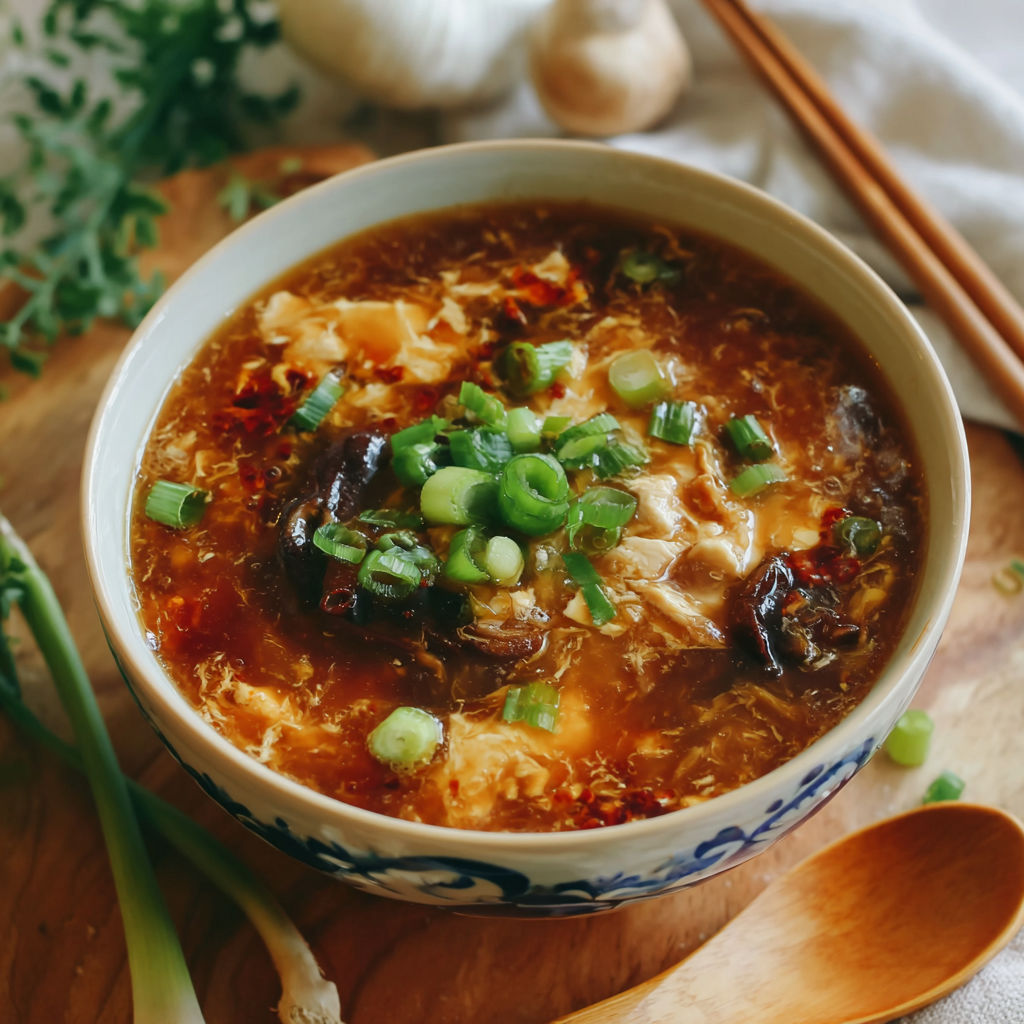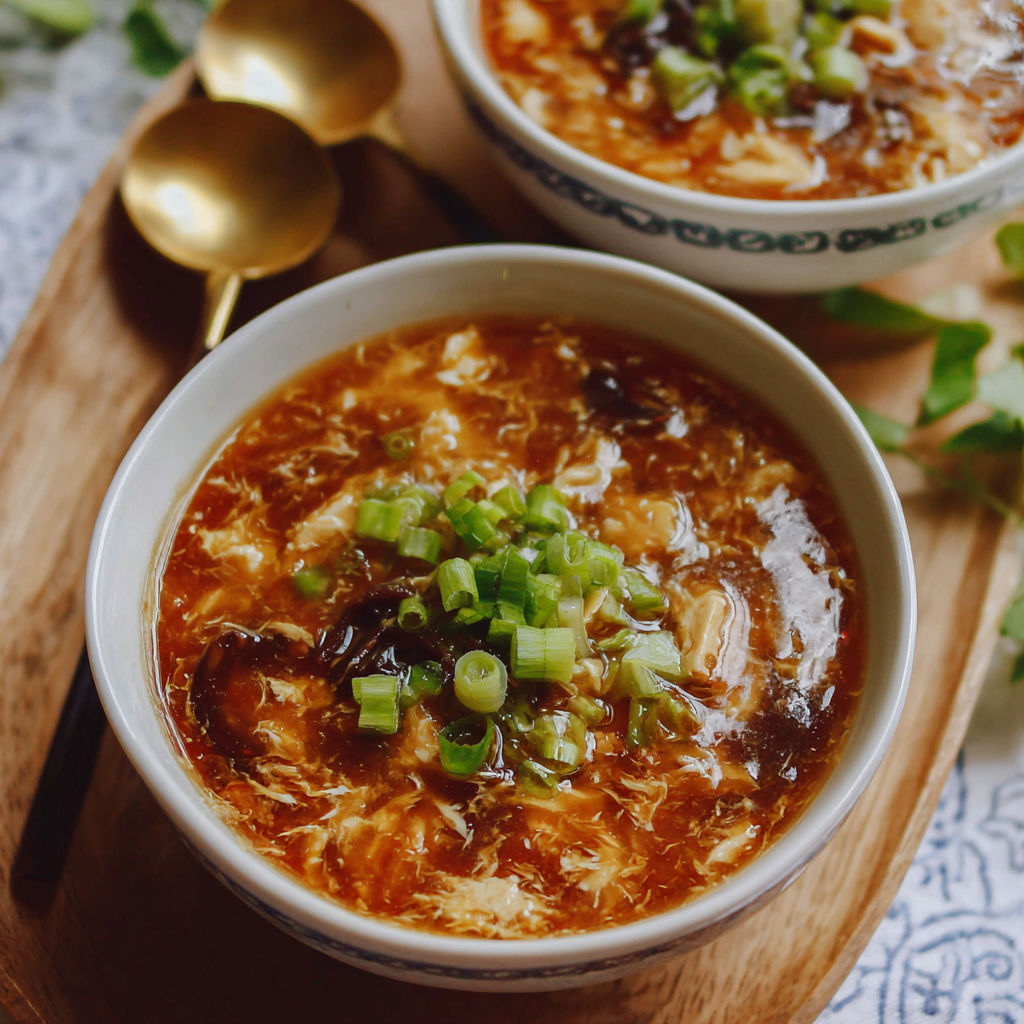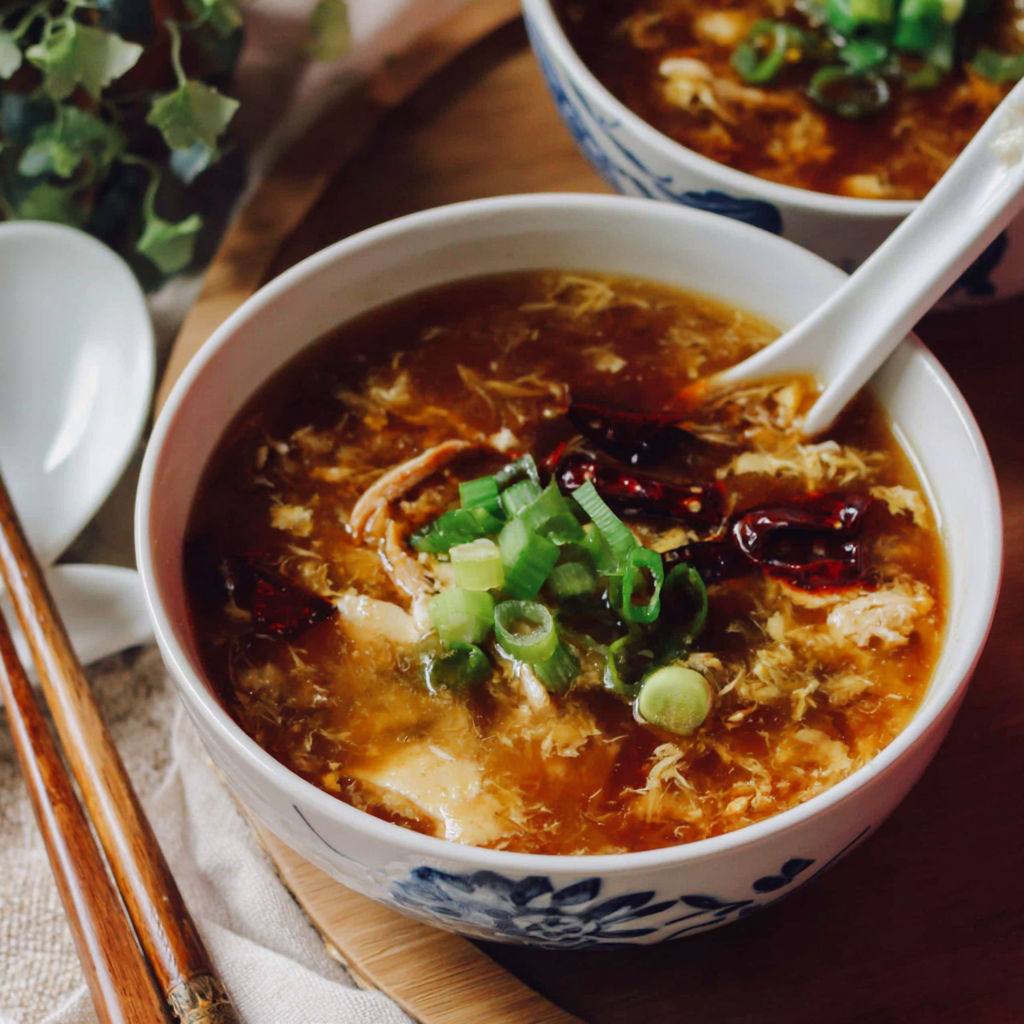 Highlight
Highlight
This hot and sour soup recipe has been a treasured family staple passed down from my grandfather, whose career as a chef shaped the perfect balance of flavors in this comforting dish. It captures the essence of traditional Chinese takeout that I grew up loving and no store-bought version has come close since.
I remember helping my grandfather in his kitchen and being fascinated by how each ingredient played its role. Now it’s a favorite that my family asks for at every gathering.
Gather Your Ingredients
- Pork shoulder: finely julienned for tender protein and a savory base
- Water: to help the pork absorb marinade and stay juicy
- Salt: to enhance flavor
- Vegetable oil: for cooking the pork and locking in moisture
- Cornstarch: to create a silky texture in the pork marinade and soup thickening
- Dried red chili peppers: add optional heat and flavor depth
- Dried lily flowers: rehydrated for a unique floral and chewy texture
- Dried wood ear mushrooms: bring an earthy crunch and contrast
- Dried shiitake mushrooms: offer deep umami notes soak until plump and slice thin
- Spiced dry tofu: adds a pungent savory dimension
- Fresh firm tofu: gives softness and balances the flavors
- Bamboo shoots: provide a crisp bite
- Egg: beaten to create delicate egg ribbons that enhance texture
- Scallion: finely diced for garnish and freshness
- Low sodium chicken stock: is the flavor foundation that brings everything together
- Salt: to taste for seasoning
- Sugar: to balance acidity and spice
- Fresh ground white pepper: is crucial for heat and authenticity
- Dark soy or mushroom soy sauce: adds color and rich flavor
- Light soy or seasoned soy sauce: contributes umami and saltiness
- Sesame oil: brings a toasty fragrance and depth
- White vinegar: gives the soup its signature sourness
- Cornstarch and water slurry: for perfect thickening without lumps
How to Make It
- Prepare the Pork:
- Combine julienned pork shoulder with water and let it absorb. Add a pinch of salt, vegetable oil, and cornstarch then mix well. Set aside. This step tenderizes the pork and helps it integrate with the soup later.
- Prepare the Dry Ingredients:
- Cut dried chilies in half, remove seeds to reduce bitterness, then mince finely. Soak dried lily flowers, wood ear mushrooms, and shiitake mushrooms separately in hot water for one to two hours until fully rehydrated. Hot water accelerates softening without losing flavor. Thinly slice mushrooms, roughly chop wood ears, and trim and halve lily flowers.
- Prepare Tofu and Secondary Ingredients:
- Cut spiced dry tofu and fresh firm tofu into two-inch long by quarter-inch thick strips. Julienne bamboo shoots carefully to maintain crunch. Beat the egg lightly in a bowl. Chop scallion finely and set aside for garnish.
- Assemble the Soup:
- Bring chicken stock to a boil in a large pot or wok. If pork clumps, add a tablespoon of water to loosen before adding it. Stir pork into boiling stock and break up clumps. Skim off any foam for a cleaner broth.
- Season the Soup:
- Add salt, sugar, dried chili pepper if using, fresh ground white pepper, both dark and light soy sauces, and sesame oil. Stir gently to distribute flavors evenly.
- Add Rehydrated and Vegetable Ingredients:
- Add lily flowers, wood ear mushrooms, shiitake mushrooms, and bamboo shoots. Let the soup return to a simmer so the flavors meld.
- Add Tofu and Vinegar:
- Stir in both types of tofu and white vinegar. This step introduces the distinctive hot and sour profile characteristic of the soup.
- Thicken the Soup:
- Mix cornstarch and water to create a slurry. Stir soup in a steady circular motion to create a whirlpool and slowly drizzle slurry while stirring to prevent lumps. When three quarters of the slurry is added, allow soup to simmer until slightly thickened. Add remaining slurry for desired thickness.
- Adjust Seasoning:
- Taste the soup and add more white pepper for heat or vinegar for sourness to match your preference. This fine-tuning lets you personalize the signature flavor balance.
- Add the Egg:
- Keep soup bubbling and stir in a circular motion to create a swirling effect. Slowly drizzle beaten egg into the soup to form silky ribbons. Avoid adding egg to a non-bubbling soup to keep it clear.
- Serve with Scallions:
- Ladle soup into bowls and garnish with chopped scallions to add brightness and a fresh finish.

My favorite ingredient is the dried shiitake mushroom because it provides that unmistakable earthy depth that transforms this soup from ordinary to extraordinary. Growing up, making this soup with my father was a weekend tradition, filled with stories and laughs, making the experience as nourishing as the meal itself.
Flavor Boosters
Serve hot and sour soup as an appetizer or alongside fried rice and steamed dumplings for a full meal. Garnish with extra chopped scallions or a few drops of chili oil if you like more heat.
Serving Suggestions
Hot and sour soup is a classic in Chinese cuisine known for its harmonious balance of pungent heat and bright acidity. It has regional variations in China, but the base ingredients here capture a traditional takeout favorite that has been adapted and loved worldwide.
Creative Twists
In colder months, this soup is perfect to warm the soul with its spicy and sour kick. For summer, lighten it by reducing soy sauce and serving slightly cooled as a balanced broth.

This recipe captures the authentic flavors of a cherished family tradition while providing clear, easy instructions for a perfect hot and sour soup every time.
Common Questions About the Recipe
- → What type of pork is best for this soup?
Finely julienned pork shoulder is ideal for tender texture and rich flavor.
- → How do dried mushrooms affect the soup’s flavor?
Dried shiitake, wood ear, and lily flowers add earthy, savory depth and unique textures.
- → Can I adjust the soup’s heat level?
Yes, modify the amount of dried red chili peppers or add extra white pepper to increase heat.
- → What is the purpose of the cornstarch slurry?
It thickens the soup, giving it a silky and velvety consistency that coats the ladle nicely.
- → Why is the beaten egg added slowly in a circular motion?
This technique creates delicate egg ribbons that enhance texture without clouding the broth.
